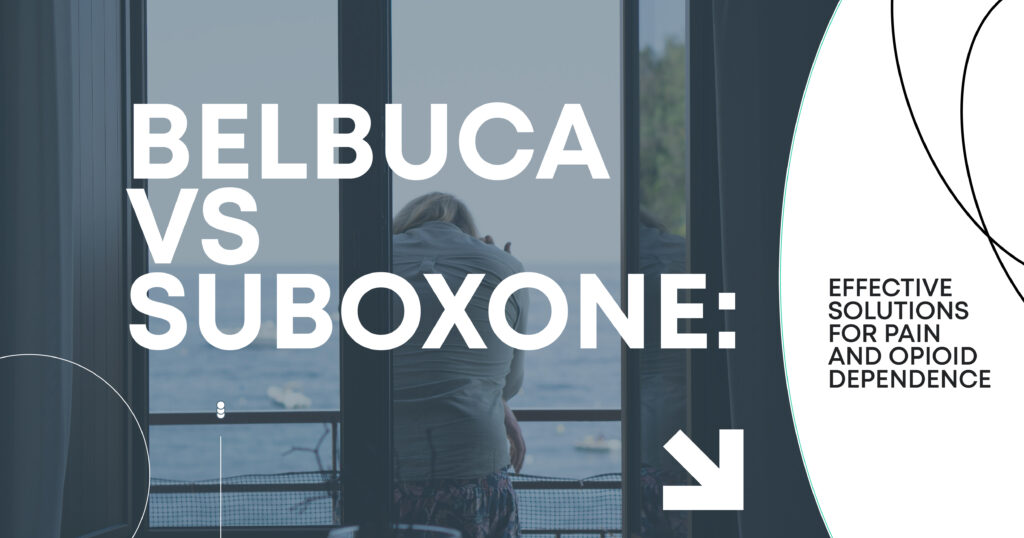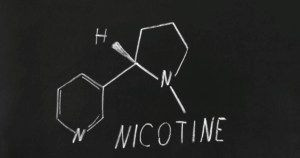Opioid dependence and chronic pain are deeply intertwined, and managing both requires a careful balance between relief and recovery. Among the most widely used treatment options today are Belbuca and Suboxone, two buprenorphine-based medications with distinct purposes and delivery methods.
If you’re asking, “What’s the difference—Belbuca vs Suboxone?”, you’re not alone. While both contain buprenorphine, they’re designed to treat different conditions and are administered in various ways. Understanding how they work, what they treat, and how they compare can empower patients and providers to make more informed decisions.
In this guide, we’ll explore the mechanisms, applications, benefits, and potential side effects of both medications and how they fit into medication-assisted therapy for opioid dependency and chronic pain management.
Introduction to Belbuca and Suboxone
Both Belbuca and Suboxone contain buprenorphine, a partial opioid agonist that reduces cravings and withdrawal symptoms without producing the intense high associated with full opioids. But despite their shared ingredient, their purposes are not the same.
- Belbuca is FDA-approved for chronic pain management in patients requiring long-term opioid treatment. It’s delivered via buccal film (absorbed through the inner cheek).
- Suboxone is FDA-approved for opioid dependency treatment. It combines buprenorphine with naloxone and is delivered via sublingual film (absorbed under the tongue).
Mental Health Center of San Diego
Mechanisms of Action in Opioid Treatment
Buprenorphine’s unique pharmacology makes it highly effective for both pain relief and addiction recovery. As a partial opioid agonist, it activates the same receptors as traditional opioids but to a lesser degree, enough to reduce symptoms without overwhelming the brain’s reward system.
Here’s how both medications work:
- Belbuca slowly releases buprenorphine to manage moderate to severe chronic pain, providing long-acting relief without the euphoric effect.
- Suboxone, with its naloxone component, discourages misuse. If injected or abused, naloxone blocks the opioid effect, reducing the risk of dependency relapse.
Comparing Buccal Film and Sublingual Film Administration
The method of delivery influences how the medication is absorbed and how quickly it works. In the discussion of buccal film vs sublingual film, understanding absorption rates and ease of use is vital.
| Medication | Administration Route | Absorption Site | Key Notes |
| Belbuca | Buccal film | Inner cheek (buccal mucosa) | Designed for slow, steady absorption to manage chronic pain |
| Suboxone | Sublingual film | Under the tongue | Faster absorption, suited for treating opioid withdrawal |
Addressing Opioid Dependency and Chronic Pain
While Belbuca and Suboxone are both forms of buprenorphine, they are not interchangeable. Each is tailored to a specific type of relief.
- Belbuca is best for chronic pain without a primary diagnosis of opioid use disorder.
- Suboxone is used for opioid dependency treatment, helping patients transition off stronger opioids with less discomfort.

Mental Health Center of San Diego
Effectiveness in Opioid Withdrawal Symptom Management
When treating opioid withdrawal, Suboxone is widely regarded as one of the most effective options available. Its combination of buprenorphine and naloxone works quickly to reduce cravings and minimize the most distressing symptoms of withdrawal. In contrast, while Belbuca also contains buprenorphine, it is not typically used in detox protocols, but may offer support during recovery, especially for those managing both pain and past opioid use.
Here’s a side-by-side look at how each medication addresses key withdrawal symptoms:
| Withdrawal Symptom | Suboxone | Belbuca |
| Cravings | Significantly reduced in most patients | Mild to moderate reduction (indirect support) |
| Nausea & Vomiting | Frequently alleviated during early treatment | Not typically used to address this symptom |
| Muscle Aches | Offers moderate to strong relief | May help if pain is chronic and ongoing |
| Restlessness | Rapid reduction reported with proper dosing | Limited effect on acute withdrawal restlessness |
| Anxiety | Helps calm physical and mental anxiety symptoms | May assist in reducing anxiety tied to chronic pain management |
Potential Side Effects of Suboxone
While Suboxone is generally well-tolerated, it can produce side effects—especially when the body is adjusting to the medication.
Some of the more common Suboxone side effects include:
- Headache or dizziness
- Constipation
- Insomnia
- Sweating or chills
- Nausea or upset stomach
- Anxiety or mood changes in some cases
Evaluating the Role of Medication-Assisted Therapy
Medication-assisted therapy (MAT) is a comprehensive approach that combines FDA-approved medications with behavioral therapy and counseling. Both Suboxone and, in some pain-related cases, Belbuca may play a role in MAT.
Benefits of MAT include:
- Reduced opioid cravings
- Stabilization of physical and mental health
- Lower risk of relapse
- Improved ability to engage in therapy and daily life
Explore Personalized Opioid Recovery—Start Healing with Mental Health Center of San Diego
Deciding between Belbuca vs Suboxone depends on your personal story—your symptoms, your goals, and your past treatment experiences. We don’t believe in one-size-fits-all care at Mental Health Center of San Diego. We create personalized, integrated treatment plans to support healing, reduce pain, and foster long-term recovery.
Whether you’re beginning your journey off opioids or struggling to balance pain management with sobriety, our team can help you find the right path forward.
Contact Mental Health Center of San Diego today and take the first step toward relief, resilience, and recovery.

Mental Health Center of San Diego
FAQs
- What are the differences in effectiveness between Belbuca and Suboxone for opioid withdrawal symptoms?
Suboxone is more effective for managing opioid withdrawal due to its combination of buprenorphine and naloxone. Belbuca is designed for pain management and isn’t typically used to address withdrawal symptoms.
- How do buccal films like Belbuca compare to sublingual films like Suboxone in terms of buprenorphine absorption?
Buccal films absorb more gradually through the inner cheek, while sublingual films work faster under the tongue. This makes Suboxone more suitable for acute symptom management.
- Can Belbuca and Suboxone be used interchangeably for chronic pain management and opioid dependency treatment?
No, they are not interchangeable. Belbuca is approved for chronic pain, and Suboxone is approved for opioid addiction. Each targets different conditions and uses different delivery and formulation strategies.
- What are the common side effects of Suboxone in medication-assisted therapy for opioid dependency?
Side effects may include nausea, dizziness, headache, constipation, and insomnia. Some patients also experience anxiety or mood changes during adjustment periods.
- How do Belbuca and Suboxone contribute to the management of opioid dependency and chronic pain through their mechanisms of action?
Both use buprenorphine to bind to opioid receptors and reduce cravings or pain. Suboxone adds naloxone to deter misuse, while Belbuca offers long-acting pain relief without euphoria.









